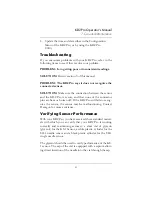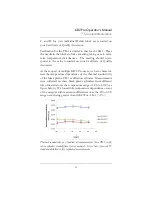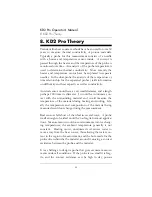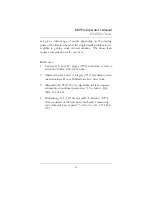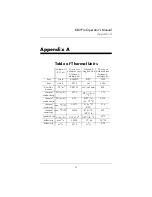
55
KD2 Pro Operator’s Manual
8. KD2 Pro Theory
materials. A long heating time is required for a large probe,
but the long heating time drives water away from the probe
and can cause free convection in liquid samples, thus altering
the reading. A high heating rate makes temperature changes
easier to read and less susceptible to temperature drift errors,
but results in water movement out of the measuring region
and free convection in liquids. Long heating times are also
recommended to minimize contact resistance, but, again,
result in water movement away from the probe.
Decagon's KD2 Pro design attempts to optimize thermal
properties measurements relative to these issues. Probes are
relatively large and robust making them easy to use. Heating
times are kept as short as possible to minimize thermally
induced water movement and minimize time required for a
measurement. Heat input is minimized to minimize water
movement and free convection. Use of relatively short heat-
ing times and low heating rates requires high resolution tem-
perature measurements and special algorithms to measure
thermal properties. The KD2 Pro resolves 0.001 C in temper-
ature. It uses special algorithms to analyze measurements
made during a heating and a cooling interval. It also uses spe-
cial algorithms to separate out the effects of the heat pulse
from ambient temperature changes. Two different algorithms
are used, one for the dual needle probe and one for the single
needle. Both are based on the line heat source analysis given
in Carslaw and Jaeger (1959) and Kluitenberg et al. (1993).
Dual Needle Algorithm
Heat is applied to the heated needle for a set heating time,
t
h
,
and temperature is measured in the monitoring needle, 6 mm
distant during heating and during the cooling period following
heating. The readings are then processed by subtracting the
ambient temperature at time 0, multiplying by
4
and dividing











